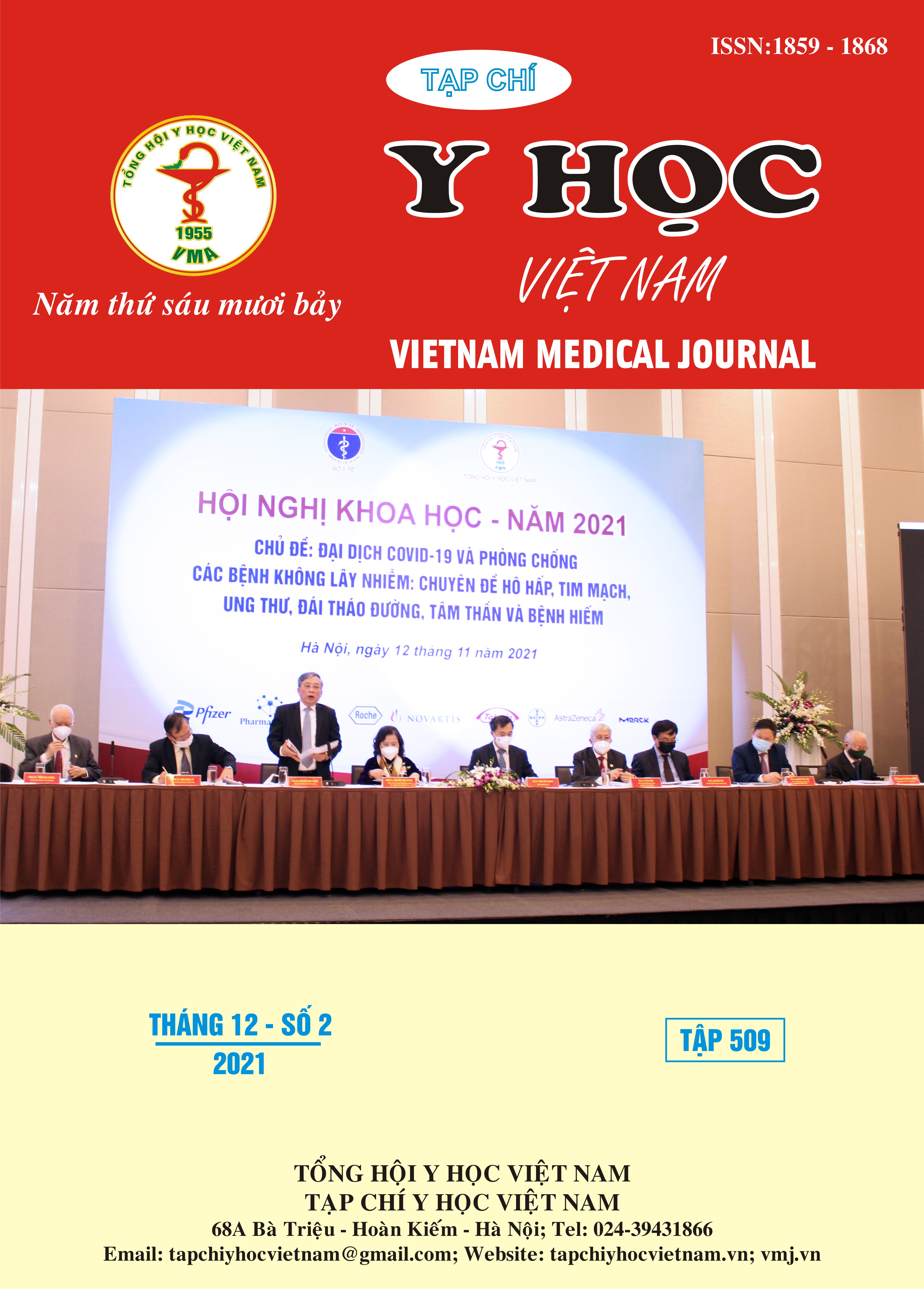TO COMPARE THE EFFECT OF PAIN RELIEF POSTOPERATION IN PEDIATRIC INGUINAL HERNIA SURGERY BETWEEN ILIOINGUINAL/ILIOHYPOGASTRIC NERVES BLOCK TO CAUDAL BLOCK
Main Article Content
Abstract
A randomized controlled clinical trial of 60 pediatric patients undergoing inguinal hernia surgery. The patients were given routine laryngeal mask anesthesia, then were divided into 2 groups: Group I: the patients were given analgesia by caudal block based on anatomical landmarks with levobupivacaine 0.2%, 0.8ml/kg. Group II: the patients was given analgesia by ilioinguinal/iliohypogastric nerves block under ultrasound guidance with levobupivacaine 0.2%, 0.3ml/kg. Quality of numbness according to Gunter score: attending at a good level were 90% for group I and 86.7% for group II; pain relief time after surgery in group I was 324 minutes, group II was 312 minutes, the difference between the two groups was not statistically significant with p > 0.05. Immediately after awakening, 100% of patients in group II were able to move their legs at the level of M0. 30 minutes after awakening, 2 patients in group I (6.7%) had not fully recovered. The side effects of the 2 groups were low and not dangerous. Conclusion: The ilioinguinal/iliohypogastric nerve blocks group had good postoperative analgesia similar to that of the caudal block group, the recovery time was shorter, and the amount of anesthetic drug used was lower.
Article Details
Keywords
Caudal block, ilioinguinal/iliohypogastric nerve blocks
References
2. Willschke H, Marhofer P, Bösenberg A, et al. Ultrasonography for ilioinguinal/iliohypogastric nerve blocks in children. 2005;95(2):226-230.
3. Willschke H, Marhofer P, Bösenberg A, et al. Ultrasonography for ilioinguinal/iliohypogastric nerve blocks in children†. BJA: British Journal of Anaesthesia. 2005;95(2):226-230.
4. Abdellatif AA. Ultrasound-guided ilioinguinal/ iliohypogastric nerve blocks versus caudal block for postoperative analgesia in children undergoing unilateral groin surgery. Saudi J Anaesth. 2012;6(4):367-372.
5. Yang L, Xu Y, Wang Z, Zhang W. Application of Ultrasound-Guided Ilioinguinal/Iliohypogastric Nerve Block in Pediatric Same-Day Surgery. Indian J Surg. 2015;77(6):512-516.
6. Takasaki M, Dohi S, Kawabata Y, Takahashi T. Dosage of lidocaine for caudal anesthesia in infants and children. Anesthesiology. 1977;47(6):527-529.
7. Breschan C, Jost R, Krumpholz R, et al. A prospective study comparing the analgesic efficacy of levobupivacaine, ropivacaine and bupivacaine in pediatric patients undergoing caudal blockade. Paediatr Anaesth. 2005;15(4):301-306.
8. Bùi Thị Thanh. Nghiên cứu gây tê khoang cùng bằng hỗn hợp levobupivacain và sufentanil trong các phẫu thuật vùng dưới rốn ở trẻ em. Học viện quân y. 2015.


